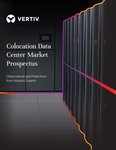Enterprises today are looking to add intelligence to their factories and warehouses to better compete in the global marketplace. Unfortunately, they are too often installing local computing equipment without fully considering the many differences between industrial spaces and dedicated data centers. The result is increased maintenance and reduced network performance.
The emerging smart factory
Over the past few years, investments in Industrial Internet of Things (IIoT), also known as Industry 4.0, were growing steadily as manufacturers sought to capture and maximize the efficiency of their production lines and facilities. The pandemic interrupted that momentum, but there are signs of recovery this year. Analyst firm MarketsandMarkets projects smart manufacturing technologies will grow from $181.3 billion in 2020 to $220.4 billion in 2025, a CAGR of 4 percent.
This growth will come from a variety of applications, all of which are data intensive and require computing close to the point of use. The cloud simply can’t support the real-time analytics and decision making required, making smart manufacturing one of the many use cases contributing to the growth in edge computing. However, unlike many edge applications, the computing that supports smart manufacturing must be capable of operating in particularly harsh environments.
Understanding the network computing challenges
The harsh conditions that exist in factories and warehouses require that special attention be paid to the following factors in the design of edge computing solutions for these environments.
- Power variations:
As with any edge location, dedicated power backup is essential to prevent disruptions in utility power from impacting system availability, but in manufacturing and automated warehouse environments, power conditioning can be even more important. The machinery operating in these facilities can generate electrical noise capable of disrupting IT equipment operation. Different types of UPS solutions employ different approaches to power conditioning and the type of UPS selected will determine how effective it is at removing various power disturbances. - Environmental conditions:
Most factory environments are unable to maintain temperature and humidity within the range required for reliable IT equipment operation. Dedicated cooling will be necessary in most industrial environments and that requires a plan for heat rejection. Specifically, is it preferable to reject heat directly into the factory space where it will be exhausted through the normal HVAC system or ducted directly out of the building? - Air quality:
Most factory environments also have a higher concentration of airborne dust and particulates than a dedicated data center. These contaminants can impact the reliability and life expectancy of IT equipment if they are pulled into the equipment by server fans. Protecting IT equipment requires dust-protected or sealed IT racks or enclosures that prevent unfiltered outside air from reaching the equipment. With dedicated cooling integrated in the enclosure, a clean, temperature- and humidity-controlled environment is created, regardless of outside air quality. - Physical security:
The core philosophy of edge computing is to locate computing and storage close to the people and equipment it supports. In manufacturing, that typically means having IT equipment where it is vulnerable to access by unauthorized personnel. Lockable cabinets can help prevent unauthorized access. Another best practice is to deploy sensors on the door that trigger alerts when the door is open. - Network infrastructure visibility:
Most edge computing sites are located in environments where dedicated technical resources are scarce. Remote monitoring capabilities give centralized IT specialists visibility into equipment performance and environmental conditions, allowing them to ensure equipment is operating as intended within manufacturing specified ranges. When equipped with additional sensors, remote monitoring can also generate alerts for situations that could put equipment at risk, such as elevated temperatures, water intrusion, or unauthorized access.
Micro data centers for harsh environments
Organizations implementing smart manufacturing technology can specify individual components that address each of these challenges and “build” a solution capable of handling the harsh environments found in manufacturing. But the preferred approach is to procure a complete integrated micro data center solution that was designed and pre-tested to provide superior performance and reliability.
These micro data center solutions leverage standardized IT-grade components to enable fast and repeatable deployments of edge computing in manufacturing. They feature rackmount cooling, intelligent power distribution, and remote management in a protected, lockable enclosure that can also support a range of UPS systems depending on the capacity and degree of power conditioning required.
When selecting a micro data center look for solutions that support monitoring multiple data points from a single IP address. This will greatly simplify management as the edge network expands. It also keeps the costs down because there is a real cost for every IP address used in a network.
Also, consider how regular maintenance tasks, such as cleaning air filters and replacing UPS batteries will be handled. The combination of remote monitoring and a service contract with a vendor capable of quickly responding to on-site maintenance requirements can greatly minimize the risk of batteries not providing the expected runtime when they are needed.
Protect your Edge
Smart manufacturing is one of the most exciting use cases for edge computing as it enables manufacturers to increase the value of existing assets and resources. But the factory or warehouse application can be hard on IT equipment without the proper protection. Integrated micro data centers with remote monitoring capabilities provide an ideal solution for this type of environment.
For more on deploying micro data center products and solutions in your edge network, read the Vertiv white paper titled Enabling Computing in Harsh Environments: Infrastructure Considerations for Manufacturing and Other IIoT Applications.
More from DCD
-

-

Sponsored The digital resilience rope-a-dope
-



